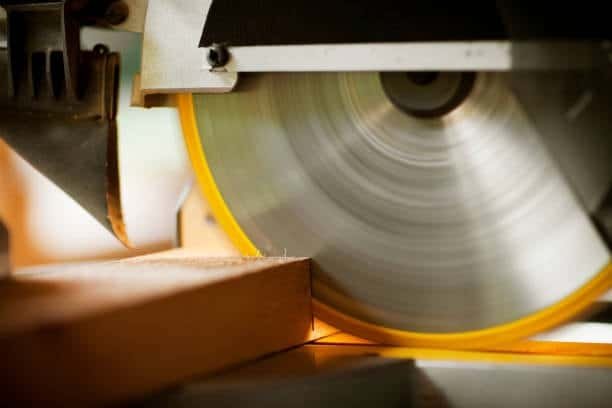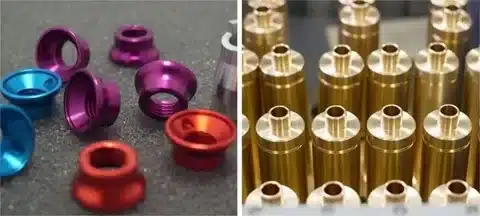Metal cutting machines form the backbone of modern manufacturing, transforming raw metal materials into precisely engineered components used across industries. From aerospace to automotive, construction to consumer goods, these powerful machines enable the production of parts with accuracy measured in microns. This comprehensive guide explores the diverse world of metal cutting methods and technologies, their applications, and how they continue to evolve in today’s advanced manufacturing landscape.
Traditional Metal Cutting Machines
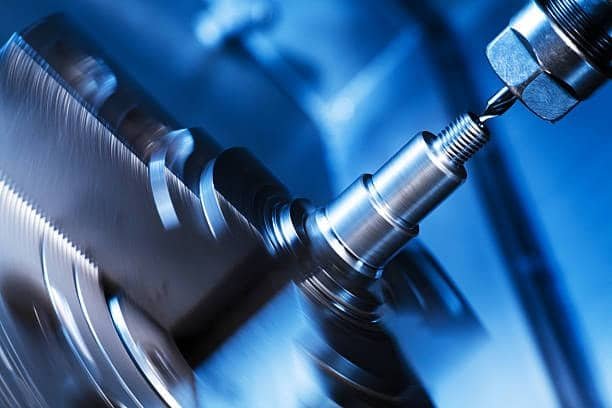
Lathes: The Cornerstone of Metal Machining
Lathes are among the oldest and most versatile metal cutting machines in existence. They operate on a simple yet powerful principle: the workpiece rotates against a stationary cutting tool. This rotation allows for symmetrical cutting operations around a central axis, using a sharp cutting tool . Modern lathes range from basic manual machines to sophisticated CNC (Computer Numerical Control) systems capable of producing complex profiles with exceptional precision.
The versatility of lathes makes them indispensable for operations such as turning, facing, threading, drilling, boring, and knurling. Industries from automotive to aerospace rely on lathe operations for creating components like shafts, pins, bushings, and countless other cylindrical parts, often from mild steel .
Drilling Machines: Creating Precise Holes
Drilling machines specialize in creating holes in metal workpieces. While seemingly straightforward, modern drilling technologies have evolved to deliver incredible precision and efficiency. These machines feature rotating drill bits that cut into stationary workpieces, removing excess material to create holes of various diameters and depths.
The family of drilling machines includes bench drill presses, radial drill presses, and multi-spindle drilling machines. Each offers different capabilities in terms of hole size, depth, and production volume, making them essential for metal fabrication . Advanced CNC drilling centers can perform complex operations with multiple tools in a single setup, dramatically reducing production time.
Milling Machines: Masters of Surface Cutting
Milling machines use rotating multi-point cutters to remove material from a workpiece. Unlike lathes, milling machines keep the cutting tool rotating while the workpiece remains stationary or moves along defined paths. This configuration enables the creation of flat surfaces, contours, slots, and three-dimensional shapes with sharp edges .
Milling machines come in horizontal and vertical configurations, referencing the orientation of the main spindle. These versatile machines can create complex geometries including slots, keyways, gears, and contoured surfaces using various metal cutting techniques . With the addition of CNC capabilities, modern milling machines can produce components with exceptional complexity and precision.
Grinding Machines: Achieving Superior Surface Finishes
When exceptionally smooth surfaces and tight tolerances are required, grinding machines take center stage. These specialized metal cutting tools use abrasive cutting wheels to remove minimal amounts of material, resulting in components with superior surface finishes and dimensional accuracy.
The grinding machine family includes surface grinders, cylindrical grinders, centerless grinders, and tool and cutter grinders. Each type specializes in different applications, from creating perfectly flat surfaces to precision-grinding hardened steel components. Grinding is often employed as a finishing operation after other machining processes.
Advanced CNC Metal Cutting Technologies
CNC Machining Centers: All-in-One Solutions
Computer Numerical Control (CNC) machining centers represent the pinnacle of metal cutting versatility. These sophisticated machines combine numerous metal cutting methods in a single platform, often featuring automatic tool changers that can switch between dozens of different cutting tools during a machining cycle.
Modern machining centers typically include 3-axis capabilities at minimum, with advanced models offering 5-axis simultaneous motion for creating complex geometries. The combination of multiple machining operations, automated tool changing, and precise computer control makes these machines powerhouses for both industry professionals in prototype development and production manufacturing.
Multi-Axis CNC Lathes: Beyond Basic Turning
While traditional lathes operate along two axes, advanced CNC lathes have evolved to incorporate multiple axes of motion and additional capabilities. Multi-axis CNC lathes can simultaneously perform turning operations while incorporating milling, drilling, and other functions, creating what are often called “turn-mill centers” or “mill-turn machines.”
These hybrid machines excel at producing complex parts in a single setup, eliminating the need to transfer workpieces between different machines. This capability not only saves time but also improves accuracy by reducing potential alignment errors during workpiece transfers, especially when needing to cut aluminum .
Swiss-Type CNC Lathes: Precision for Small Components
Swiss-type automatic lathes represent specialized turning centers designed for producing small, complex parts with exceptional precision. Originally developed for the Swiss watch industry, these machines feature a unique guide bushing that supports the workpiece close to the cutting tool, minimizing deflection and enabling tight tolerances even on slender components.
Today’s Swiss-type machines incorporate multiple tool positions, live tooling capabilities, and sophisticated control systems. They excel at producing small, precise components for industries including medical device manufacturing, electronics, and aerospace.
CNC Router Systems: Large-Format Cutting Power
CNC router systems provide large-format metal cutting capabilities using principles similar to milling machines. With expansive work envelopes, these machines can process full sheets of metal for applications like signage, architectural components, and industrial fabrication.
Modern CNC routers incorporate vacuum or mechanical clamping systems to secure materials and may feature multiple cutting heads for increased productivity. While traditionally associated with woodworking, specialized metal-cutting CNC routers have gained popularity for aluminum processing and other non-ferrous metal applications.
High-Precision Specialty Machines

Jig Boring Machines: Ultimate Precision
Jig boring machines represent the highest standard in precision hole-making operations. These specialized machines can produce holes in electrically conductive materials with exceptional positional accuracy and dimensional tolerances, making them crucial for toolmaking and precision manufacturing.
Modern jig boring machines incorporate advanced features like temperature compensation, vibration isolation systems, and ultra-precise measurement capabilities. While CNC machining centers have incorporated many jig boring capabilities, dedicated jig boring machines remain relevant for applications requiring the utmost precision.
Gear Cutting Machines: Creating Complex Tooth Profiles
The specialized field of gear manufacturing relies on purpose-built gear cutting machines. These machines use specialized tooling and precise motions to generate the complex tooth profiles required for functional gears, often working with carbon steel .
The family of gear cutting machines includes hobbing machines, shaping machines, broaching machines, and gear grinding equipment. Each employs different cutting principles optimized for specific gear types, sizes, and quality requirements. Advanced CNC gear cutting centers can now produce gears with exceptional accuracy while reducing setup times and improving production efficiency.
Broaching Machines: Specialized Internal Shapes
Broaching represents a unique metal cutting process using a specialized multi-tooth cutting tool called a broach. As the broach is pulled or pushed through a workpiece, its progressively larger teeth remove material to create precise internal or external shapes.
Broaching machines excel at creating non-circular internal shapes like keyways, splines, and hexagonal holes. The process is particularly valuable in high-volume production environments, as broaching can produce complex shapes in a single operation with exceptional consistency.
Non-Traditional Metal Cutting Technologies
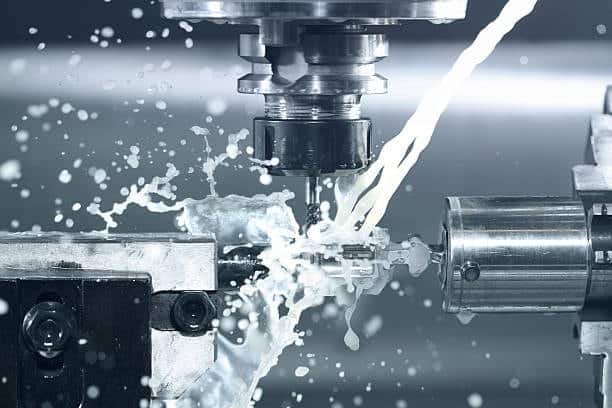
Electrical Discharge Machines (EDM): Cutting with Sparks
Electrical Discharge Machining (EDM) represents a fundamentally different approach to metal cutting. Rather than using physical cutting tools, EDM removes material through electrical discharges (sparks) between an electrode and the workpiece, both submerged in dielectric fluid.
The EDM family includes wire EDM, which uses a thin wire as the electrode to cut complex profiles, and sinker EDM, which uses shaped electrodes to create three-dimensional cavities. EDM technology excels at processing hardened metals and creating complex geometries that would be difficult or impossible with conventional cutting tools.
Laser Cutting Machines: Precision Through Light
Laser cutting machines employ focused laser beams to melt, burn, or vaporize metal with exceptional precision. These non-contact cutting systems can process sheet metal and plate with minimal distortion, creating clean edges and intricate designs, similar to oxy fuel cutting technique stainless steel
Modern laser cutting systems offer multi-kilowatt power levels, high-speed motion systems, and sophisticated control software. They excel at processing sheet metal components for industries ranging from automotive to electronics, architecture, and general fabrication other cutting methods. Advanced fiber laser technology has further expanded capabilities for cutting reflective metals like copper and brass.
Plasma Cutting Systems: High-Speed Thermal Cutting
Plasma cutting uses a high-temperature, electrically conductive gas to cut through conductive metals. The process creates an electrical arc that heats gas to plasma state, which then cuts through metal with remarkable speed and efficiency manufacturing industry.
These systems excel at processing thicker materials that might challenge laser cutters, making them popular for structural steel fabrication, heavy equipment manufacturing, and metal recycling operations. Modern CNC plasma cutting systems offer improved edge quality and dimensional accuracy compared to earlier generations cnc cutting machines.
Waterjet Cutting Machines: Cold Cutting Power
Waterjet cutting represents a versatile metal cutting technology that uses ultra-high-pressure water, often mixed with abrasive particles, to cut through virtually any material. Since the process generates minimal heat, it can cut metal without creating heat-affected zones or thermal distortion.
These machines excel at processing large-format metal sheets and plates, offering the ability to create near-net-shape components with good dimensional accuracy. Waterjet technology is particularly valuable for cutting heat-sensitive materials and thick metal plates where thermal cutting methods might cause distortion.
Automated Production Systems
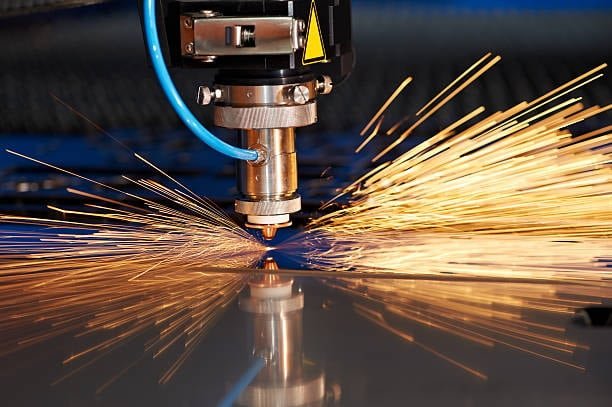
Transfer Lines: High-Volume Production
Transfer lines represent highly automated manufacturing systems that perform sequential machining operations on workpieces as they move through a series of stations. These systems excel at high-volume production of standardized components.
Modern transfer lines incorporate multiple metal cutting technologies, including drilling, milling, turning, and grinding operations. While less flexible than standalone CNC machines, they offer exceptional productivity for high-volume manufacturing scenarios like automotive powertrain components.
Flexible Manufacturing Systems (FMS): Adaptable Automation
Flexible Manufacturing Systems combine multiple CNC machines with automated material handling and centralized control systems. These integrated solutions enable efficient production of diverse component families while maintaining automation benefits.
The heart of an FMS typically includes several CNC machining centers, inspection systems, and automated storage and retrieval systems. This approach bridges the gap between dedicated transfer lines and standalone machines, offering a balance of productivity and flexibility.
Robotic Machining Cells: Intelligent Automation
Robotic machining cells combine industrial robots with cutting tools to create flexible metal processing systems. Rather than using fixed machine tools, these systems mount cutting implements on multi-axis robot arms, enabling processing of complex three-dimensional components.
While typically offering less rigidity than traditional machine tools, robotic machining cells excel at applications like trimming, deburring, and light machining of large components. Their flexibility makes them valuable for aerospace, automotive, and general manufacturing applications.
Specialized Industry Solutions
Aerospace-Grade Machining Centers
The aerospace industry demands exceptional precision, reliability, and specialized capabilities from its metal cutting equipment. Purpose-built aerospace machining centers feature extra-large work envelopes, high-precision spindles, and specialized fixturing for processing critical components.
These machines often incorporate technologies for machining challenging materials like titanium alloys, Inconel, and other heat-resistant superalloys. Advanced features may include on-machine inspection capabilities, tool monitoring systems, and sophisticated process control software to ensure consistent quality.
Medical Device Manufacturing Equipment
The medical device industry relies on specialized metal cutting technologies to produce implants, surgical instruments, and other critical components. These machines feature exceptional precision capabilities, specialized tooling for biocompatible materials, and advanced quality control systems.
Swiss-type lathes, micro-milling machines, and specialized grinding equipment dominate this sector, capable of producing minute components with microscopic features and exceptional surface finishes. Stringent cleanliness requirements and material traceability add additional demands on these manufacturing systems.
Heavy Industrial Metal Cutting Solutions
At the opposite end of the size spectrum, heavy industrial applications require massive metal cutting machines capable of processing large components. These systems include oversized boring mills, bridge-type milling machines, and specialized turning equipment for processing components weighing many tons.
Industries like shipbuilding, power generation, mining, and heavy equipment manufacturing rely on these massive metal cutting solutions. Despite their size, modern heavy industrial machine tools incorporate sophisticated CNC controls and high-precision capabilities.
Future Trends in Metal Cutting Technology
Hybrid Manufacturing Systems
The line between additive and subtractive manufacturing continues to blur with the development of hybrid manufacturing systems. These innovative machines combine metal 3D printing capabilities with traditional CNC machining operations in a single platform.
This approach enables the creation of complex internal geometries through additive processes, followed by precision finishing of critical surfaces via traditional metal cutting. This combination promises to revolutionize how certain components are manufactured, particularly in aerospace, medical, and high-performance applications.
Smart Machine Tools and Industry 4.0 Integration
The next generation of metal cutting machines features unprecedented levels of connectivity, self-monitoring capabilities, and integration with broader manufacturing ecosystems. These “smart” machine tools incorporate sensors that monitor cutting conditions, tool wear, and component quality in real-time.
Advanced analytics and machine learning systems use this data to optimize cutting parameters, predict maintenance needs, and ensure consistent quality. Full integration with manufacturing execution systems and enterprise resource planning platforms creates truly connected manufacturing environments aligned with Industry 4.0 principles.
Micromachining and Ultra-Precision Technologies
As components continue to shrink across industries like electronics, medical devices, and advanced sensors, metal cutting technologies evolve to meet demands for ever-smaller features. Ultra-precision machining centers can achieve accuracy measured in nanometers, creating microscopic features invisible to the naked eye.
These specialized machines incorporate air bearings, sophisticated environmental controls, and advanced motion systems to achieve previously impossible levels of precision. While currently representing a specialized niche, these technologies increasingly influence mainstream manufacturing as precision requirements continue to increase.
Conclusion
Metal cutting machines remain fundamental to modern manufacturing despite advances in additive manufacturing and other technologies. The remarkable diversity of these machines reflects the wide range of components, materials, and production scenarios encountered across industries. From traditional manual lathes that have served for generations to cutting-edge hybrid manufacturing systems combining multiple technologies, metal cutting equipment continues to evolve while maintaining its essential role in creating the components that power our world.
As manufacturing continues its digital transformation, metal cutting technologies increasingly incorporate smart features, connectivity, and integration with broader production ecosystems. This evolution ensures these machines will remain relevant far into the future, even as their capabilities, efficiency, and integration continue advancing.

